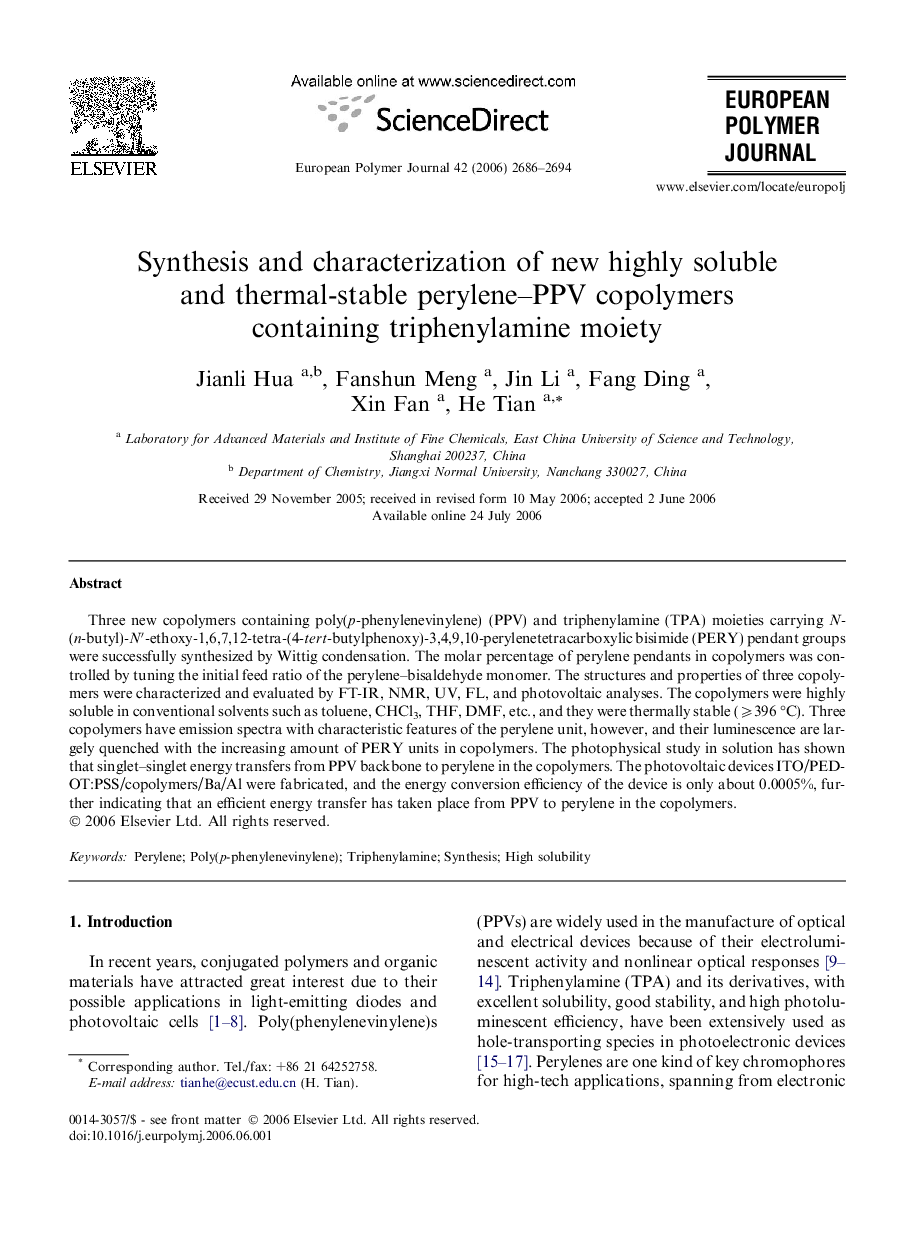| Article ID | Journal | Published Year | Pages | File Type |
|---|---|---|---|---|
| 1400284 | European Polymer Journal | 2006 | 9 Pages |
Three new copolymers containing poly(p-phenylenevinylene) (PPV) and triphenylamine (TPA) moieties carrying N-(n-butyl)-N′-ethoxy-1,6,7,12-tetra-(4-tert-butylphenoxy)-3,4,9,10-perylenetetracarboxylic bisimide (PERY) pendant groups were successfully synthesized by Wittig condensation. The molar percentage of perylene pendants in copolymers was controlled by tuning the initial feed ratio of the perylene–bisaldehyde monomer. The structures and properties of three copolymers were characterized and evaluated by FT-IR, NMR, UV, FL, and photovoltaic analyses. The copolymers were highly soluble in conventional solvents such as toluene, CHCl3, THF, DMF, etc., and they were thermally stable (⩾396 °C). Three copolymers have emission spectra with characteristic features of the perylene unit, however, and their luminescence are largely quenched with the increasing amount of PERY units in copolymers. The photophysical study in solution has shown that singlet–singlet energy transfers from PPV backbone to perylene in the copolymers. The photovoltaic devices ITO/PEDOT:PSS/copolymers/Ba/Al were fabricated, and the energy conversion efficiency of the device is only about 0.0005%, further indicating that an efficient energy transfer has taken place from PPV to perylene in the copolymers.
